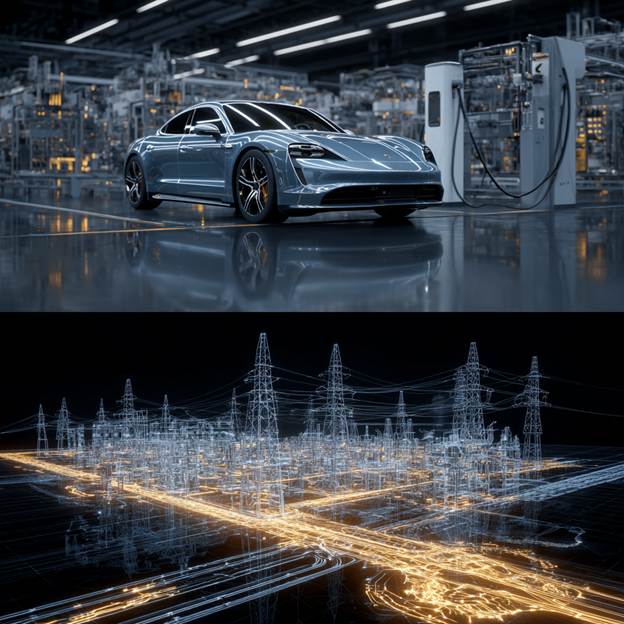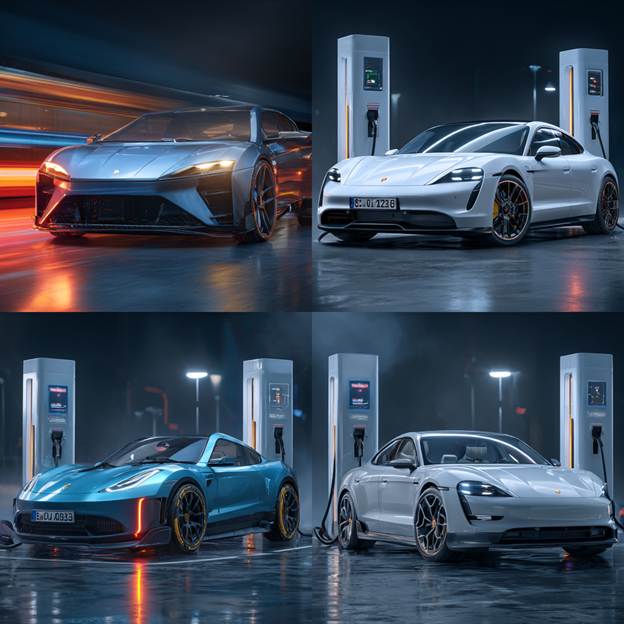For years, the electric vehicle revolution has been shadowed by a persistent inconvenience: charging time. While EV owners sing the praises of smooth, silent acceleration and zero tailpipe emissions, the reality of long waits at charging stations has remained a significant barrier to widespread adoption. But what if that barrier is about to crumble? Chinese automaker BYD’s recent announcement of a new 1,000-kilowatt (kW) charging technology, dubbed «Megawatt Flash Charging,» promises to do just that, potentially charging an EV as quickly as filling up a gasoline car. This isn’t just an incremental improvement; it’s a potential game-changer that could fundamentally alter the landscape of personal transportation.
Reversing the Convenience Gap
The «convenience gap» between electric vehicles and their internal combustion engine (ICE) counterparts has always been a major talking point. A five-minute stop at a gas station is a deeply ingrained part of the driving experience for most people. In contrast, even the fastest EV chargers today typically require a 20- to 30-minute stop to add a significant amount of range. This disparity, while manageable for daily commuting, becomes a real consideration for long-distance travel.
BYD’s new technology, part of its «Super e-Platform,» aims to obliterate this gap. The company claims its Megawatt Flash Charging can add up to 400 kilometers (nearly 250 miles) of range in just five minutes. This brings EV «refueling» into the same ballpark as a traditional gas station visit. If this technology becomes widely available, the argument of charging time as a primary drawback to EV ownership will largely evaporate. The ability to quickly top up on the go would make EVs a truly viable option for all types of drivers, from city dwellers to road-trippers, potentially accelerating the transition to electric mobility at an unprecedented rate.

The Hurdles of Megawatt Power
While the prospect of 1,000 kW charging is exciting, the road to implementation is paved with significant challenges. Deploying chargers of this magnitude is not as simple as swapping out existing hardware. The primary obstacle is the immense strain such chargers would place on the electrical grid. A single 1,000 kW charger draws the same amount of power as hundreds of homes. Installing a bank of these chargers at a single location would require substantial and costly upgrades to local grid infrastructure, including transformers and substations.
To mitigate this, BYD has announced plans to pair its Megawatt Flash Charging stations with energy storage solutions. These large battery systems would draw power from the grid during off-peak hours and then discharge that stored energy into vehicles at high speeds, buffering the grid from sudden, massive power draws. While this is a viable solution, it adds to the complexity and expense of building out the necessary infrastructure. Furthermore, the heat generated by such high-power charging requires advanced liquid-cooling technology for both the charging cable and the vehicle’s battery to ensure safety and longevity.

The Race to the Top
BYD is not alone in the quest for faster charging, though its 1,000 kW announcement has certainly set a new benchmark. Several other automakers are pushing the boundaries of charging technology. Lotus, with its Eletre SUV, has demonstrated charging speeds of up to 450 kW on its own proprietary chargers. Chinese automaker XPeng offers a 480 kW supercharger, while Nio has developed a 500 kW charger.
In the more mainstream market, several manufacturers have adopted 800-volt architectures that allow for impressive charging speeds. Porsche’s Taycan can charge at up to 320 kW. Hyundai and Kia, with their E-GMP platform, have also embraced 800-volt technology, enabling their vehicles to charge at up to 320 kW, adding a significant amount of range in under 20 minutes. While these speeds are impressive, BYD’s 1,000 kW technology represents a significant leap forward.
Is There a Ceiling?
The question now is, how fast can we go? Is there a physical limit to how quickly an EV battery can be charged? The answer is complex and depends on advancements in battery chemistry, thermal management, and charging infrastructure. As battery technology evolves, we may see even faster charging rates become possible. However, there may be a point of diminishing returns. Once charging times are consistently under 10 minutes for a substantial range addition, the perceived inconvenience of charging may be so minimal that further reductions in time are less impactful for the average consumer.
Wrapping Up
BYD’s announcement of 1,000 kW charging is a landmark moment in the evolution of the electric vehicle. It signals a future where the convenience gap between EVs and ICE cars is not just narrowed but potentially reversed. The ability to «refuel» an EV in the time it takes to grab a cup of coffee will be a powerful catalyst for the mass adoption of electric mobility. While the challenges of implementing such powerful infrastructure are significant, they are not insurmountable. As BYD and other automakers continue to push the boundaries of what’s possible, the era of the five-minute EV charge may be closer than we think.
Disclosure: Images rendered by Midjourney
Rob Enderle is a technology analyst at Torque News who covers automotive technology and battery developments. You can learn more about Rob on Wikipedia and follow his articles on Forbes, X, and LinkedIn.












